Screw or K-wire fixation of a triquetrum fracture
1. General considerations
For the fixation of triquetrum body fractures, headless compression screws may be used and inserted in a retrograde fashion. If there is comminution or small fragments, K-wires may be used.
Isolated triquetrum fractures are relatively common (up to 17% of all carpal bone fractures). The majority are dorsal cortex fractures that are usually treated conservatively.

In this basic technique, associated bony and ligamentous injuries are not shown for clarity.
Choice of implant
If one fragment is small, a mini cannulated, headless, self-compressing screw or K-wires may be used.
For large fragments, the use of a standard headless compression screw is advisable.
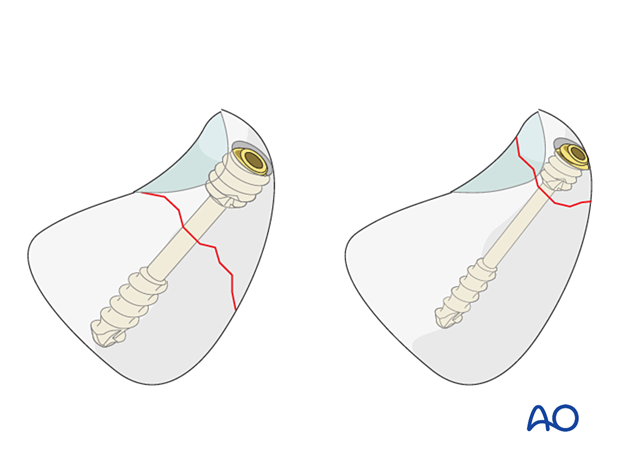
2. Reduction
If the fracture is displaced, reduce it with an elevator or the K-wire joystick technique.
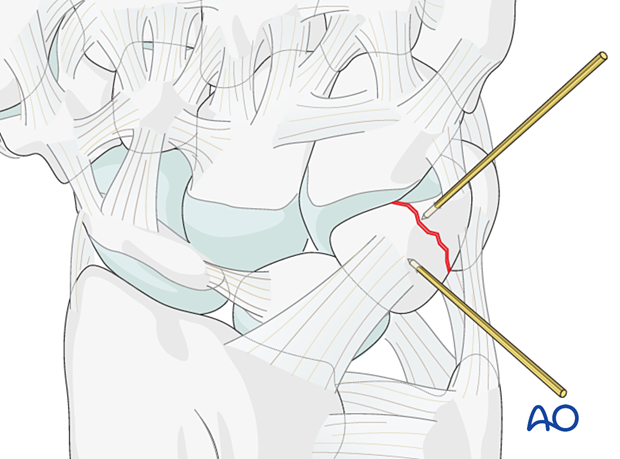
Temporarily stabilize the fracture with a K-wire. Avoid the planned screw track.
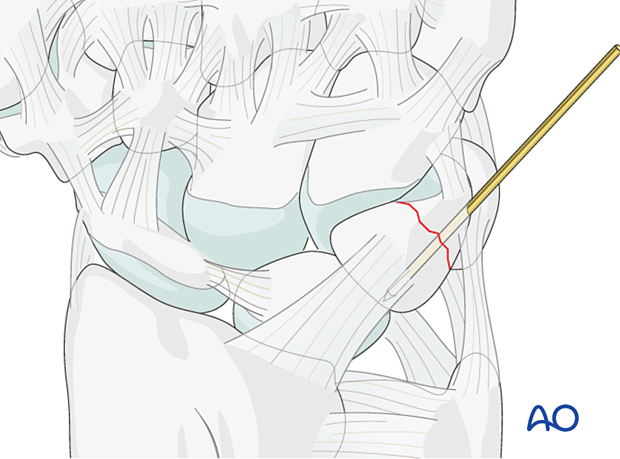
3. K-wire fixation
Insert an additional K-wire retrogradely for fracture stabilization in a standard manner.
Cut and bend the ends to bury them under the skin.
Check the final position of the K-wires with an image intensifier.
Immobilization with a splint is mandatory to avoid nonunion.
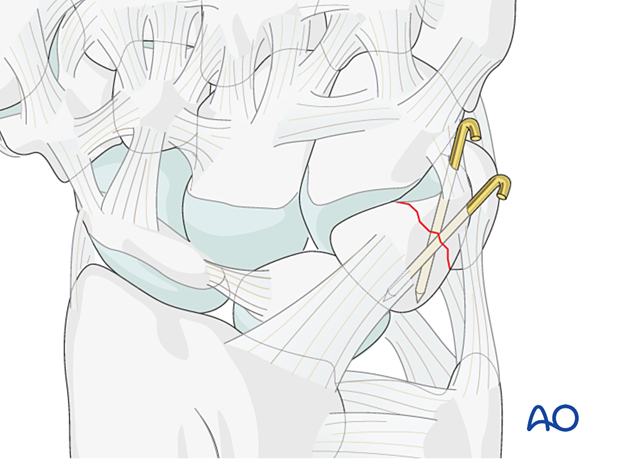
4. Screw fixation
Guide-wire insertion
Usually, the screw is inserted retrogradely.
Insert the guide wire as perpendicular to the fracture plane as possible.
Confirm accurate advancement of the guide wire perpendicular to the fracture plane with an image intensifier in two planes.
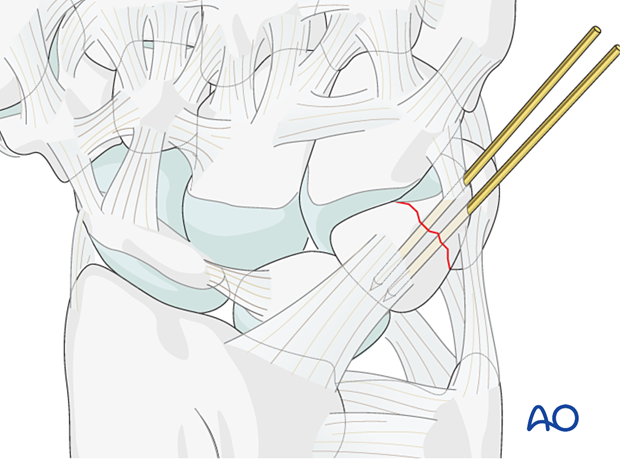
Screw insertion
Insert the headless compression screw in a standard manner.
Select a screw 2–4 mm shorter than the measured length with the appropriate thread length.
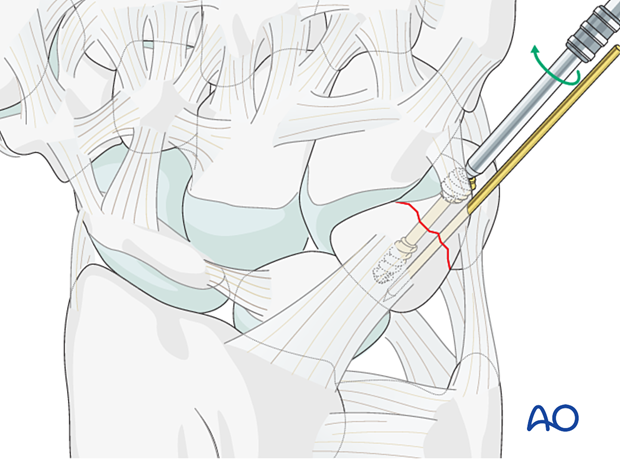
Check the final position of the screw with an image intensifier.














